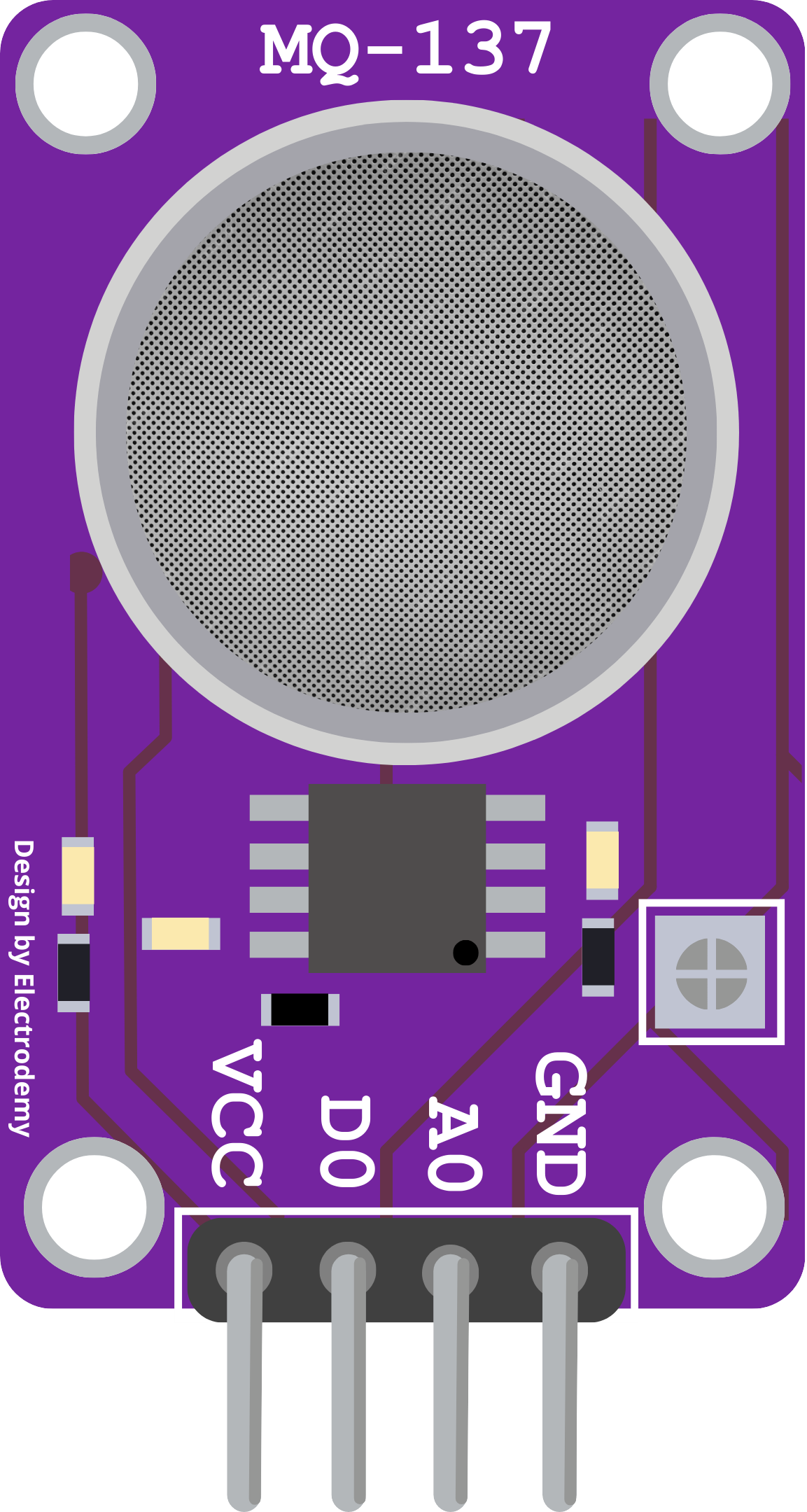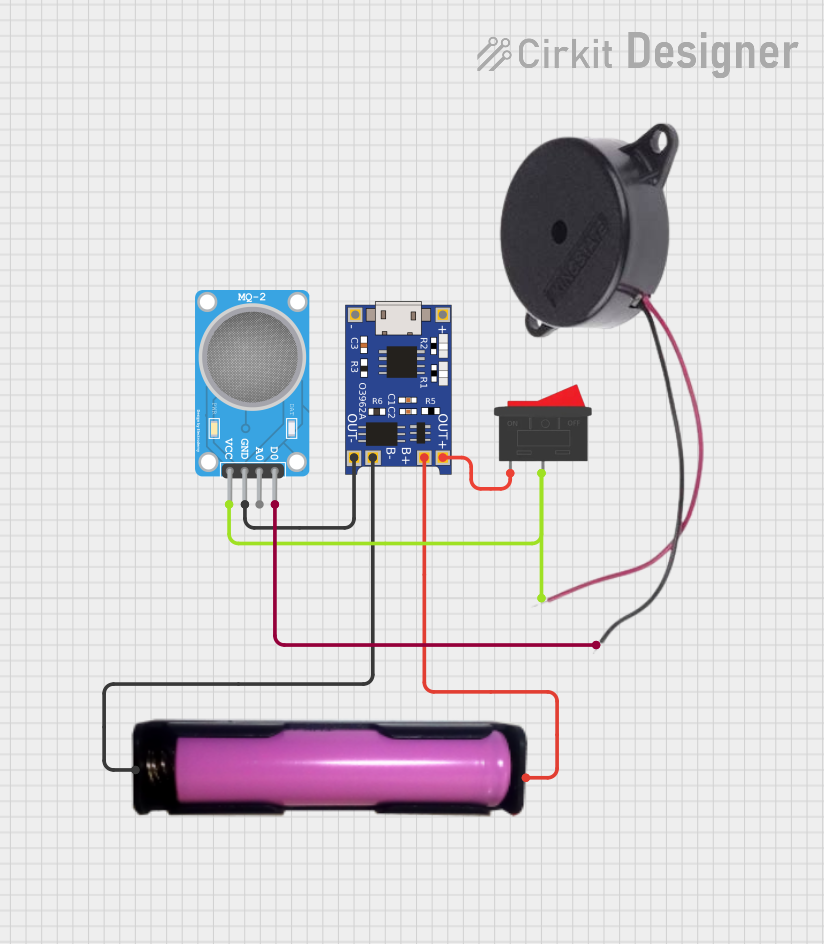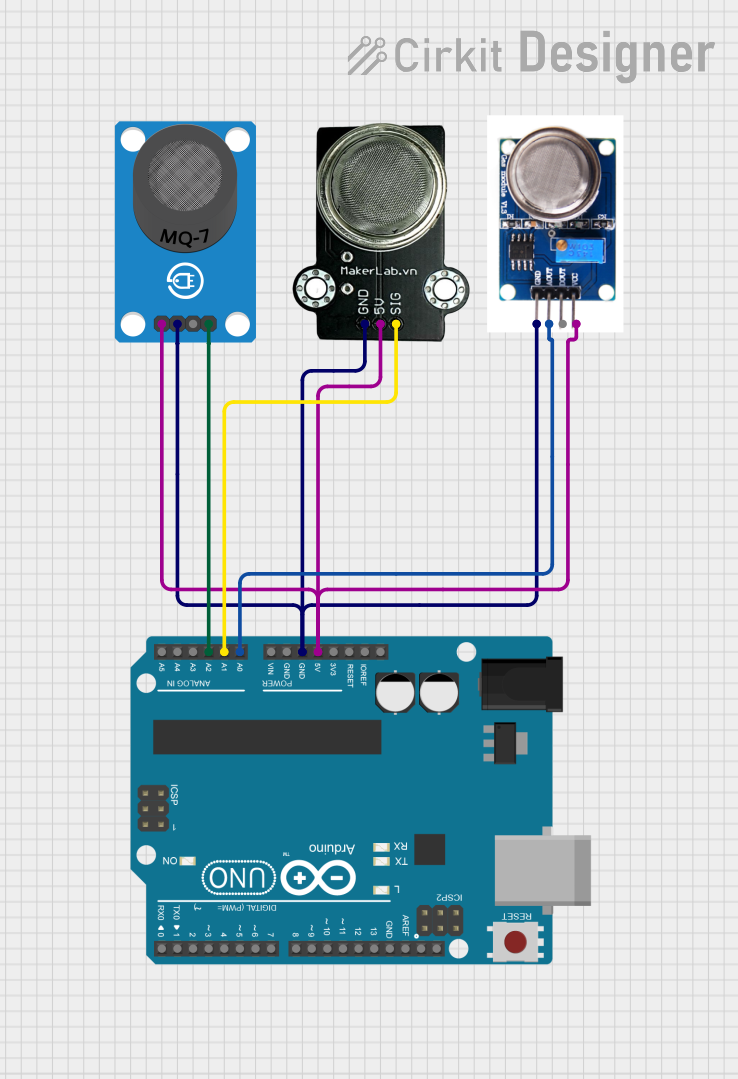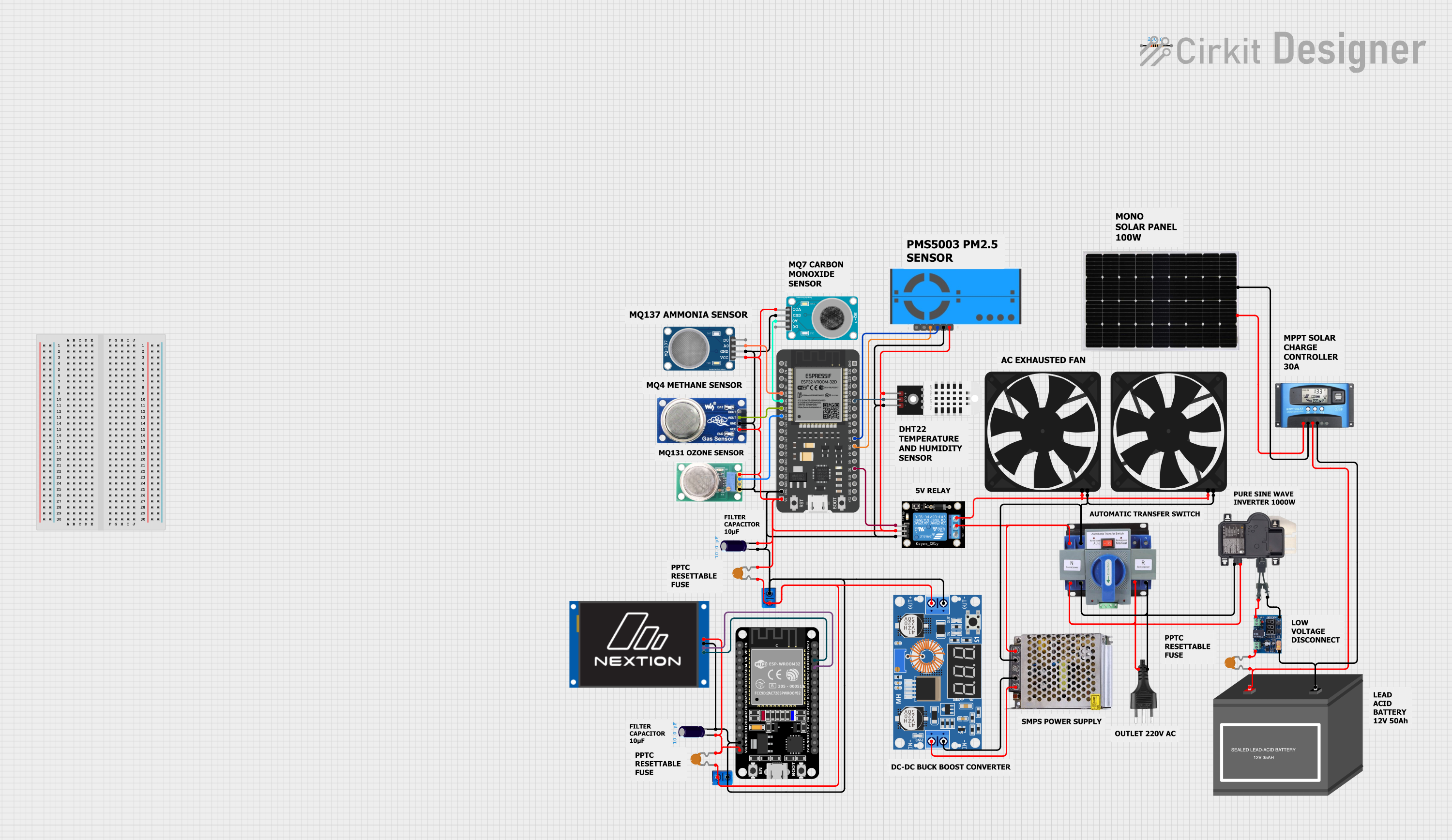
How to Use MQ-137 SENSOR AMMONIA GAS V2: Examples, Pinouts, and Specs

 Design with MQ-137 SENSOR AMMONIA GAS V2 in Cirkit Designer
Design with MQ-137 SENSOR AMMONIA GAS V2 in Cirkit DesignerIntroduction
The MQ-137 Sensor Ammonia Gas V2 is an analog gas sensor module designed for the detection of ammonia (NH3) in the air. It is widely used in industrial and environmental applications to monitor air quality and control systems that require the measurement of NH3 concentration. The sensor's high sensitivity and fast response time make it suitable for safety systems in agricultural, chemical, and manufacturing industries.
Explore Projects Built with MQ-137 SENSOR AMMONIA GAS V2

 Open Project in Cirkit Designer
Open Project in Cirkit Designer
 Open Project in Cirkit Designer
Open Project in Cirkit Designer
 Open Project in Cirkit Designer
Open Project in Cirkit Designer
 Open Project in Cirkit Designer
Open Project in Cirkit DesignerExplore Projects Built with MQ-137 SENSOR AMMONIA GAS V2

 Open Project in Cirkit Designer
Open Project in Cirkit Designer
 Open Project in Cirkit Designer
Open Project in Cirkit Designer
 Open Project in Cirkit Designer
Open Project in Cirkit Designer
 Open Project in Cirkit Designer
Open Project in Cirkit DesignerCommon Applications and Use Cases
- Air quality monitoring
- Industrial leak detection
- Environmental monitoring
- Agricultural monitoring systems
- Chemical processing plants
Technical Specifications
Key Technical Details
- Detection Gas: Ammonia (NH3)
- Concentration Range: 5ppm to 200ppm
- Supply Voltage: 5V DC ±0.1V
- Heater Voltage: 5V ±0.1V (AC or DC)
- Load Resistance: Adjustable
- Heater Resistance: 33Ω ±5%
- Heater Power Consumption: Approx. 800mW
- Operating Temperature: -10°C to 50°C
- Humidity Range: 95% RH or less (non-condensing)
Pin Configuration and Descriptions
| Pin Number | Description | Notes |
|---|---|---|
| 1 | VCC | Supply Voltage (5V) |
| 2 | GND | Ground |
| 3 | Digital Out (DOUT) | TTL output for threshold alarm |
| 4 | Analog Out (AOUT) | Analog output voltage |
| 5 | Heater Control (H) | Heater control (not always used) |
Usage Instructions
How to Use the Component in a Circuit
- Power Supply: Connect the VCC pin to a 5V power supply and the GND pin to the ground.
- Analog Output: Connect the AOUT pin to an analog input on your microcontroller to read the sensor's output voltage, which is proportional to the ammonia gas concentration.
- Digital Output (Optional): The DOUT pin can be connected to a digital input on your microcontroller. It will go high when the gas concentration exceeds a preset threshold, which can be adjusted using the onboard potentiometer.
- Heater Control (Optional): The H pin can be used to turn the heater on and off, allowing for power saving in battery-operated applications.
Important Considerations and Best Practices
- Preheat Time: The sensor requires a preheat time of at least 24 hours for the first use and about 20 minutes for subsequent uses to stabilize its readings.
- Calibration: Calibrate the sensor in the environment where it will be used or in a controlled atmosphere with a known concentration of ammonia.
- Avoid Harsh Conditions: Protect the sensor from exposure to high concentrations of corrosive gases, organic solvents, and oils, which can damage the sensor.
- Ventilation: Ensure proper ventilation around the sensor to allow for accurate gas detection.
Troubleshooting and FAQs
Common Issues
- Inaccurate Readings: If the sensor provides inconsistent or inaccurate readings, check for proper preheating and calibration. Ensure that the sensor is not exposed to volatile organic compounds or other interfering gases.
- No Response: Verify that the power supply is correctly connected and within the specified voltage range. Check for any loose connections or damaged pins.
Solutions and Tips for Troubleshooting
- Preheat the Sensor: Always allow the sensor to preheat for the recommended time before taking measurements.
- Check Connections: Ensure all connections are secure and free from corrosion or damage.
- Calibration: Regularly recalibrate the sensor to maintain accuracy, especially if the sensor has been exposed to different environmental conditions.
FAQs
Q: Can the MQ-137 sensor detect other gases? A: While the MQ-137 is designed for ammonia detection, it may show cross-sensitivity to other gases. It is important to calibrate the sensor for NH3 specifically.
Q: How do I adjust the sensitivity of the sensor? A: Sensitivity can be adjusted by turning the onboard potentiometer. Clockwise increases sensitivity, while counterclockwise decreases it.
Q: What is the lifespan of the MQ-137 sensor? A: The typical lifespan of the sensor is about 2 years, depending on the usage and environmental conditions.
Example Arduino Code
// MQ-137 Ammonia Gas Sensor Example Code
const int analogPin = A0; // Analog output from the MQ-137 sensor
const int heaterPin = 2; // Digital pin connected to the heater control (if used)
void setup() {
Serial.begin(9600); // Start serial communication at 9600 baud
pinMode(heaterPin, OUTPUT); // Set heater pin as an output
digitalWrite(heaterPin, HIGH); // Turn on the heater (if used)
}
void loop() {
int sensorValue = analogRead(analogPin); // Read the sensor output
float concentration = sensorValue * (10.0 / 1023.0); // Convert to concentration
Serial.print("Ammonia concentration: ");
Serial.print(concentration);
Serial.println(" ppm");
delay(1000); // Wait for 1 second before the next read
}
Note: The above code is a simple example to read the analog output from the MQ-137 sensor. The conversion from the sensor value to the actual concentration in ppm requires proper calibration with a known concentration of ammonia gas.